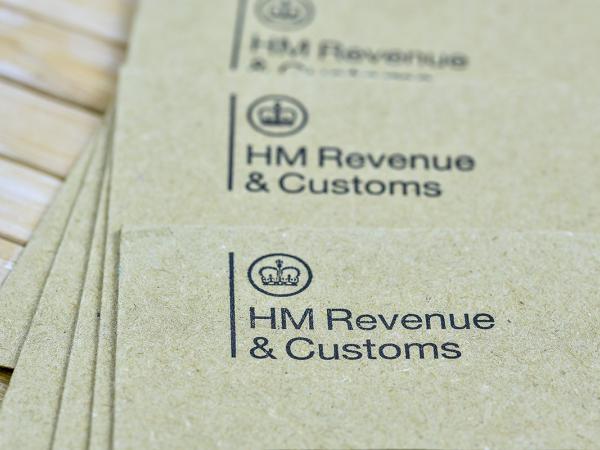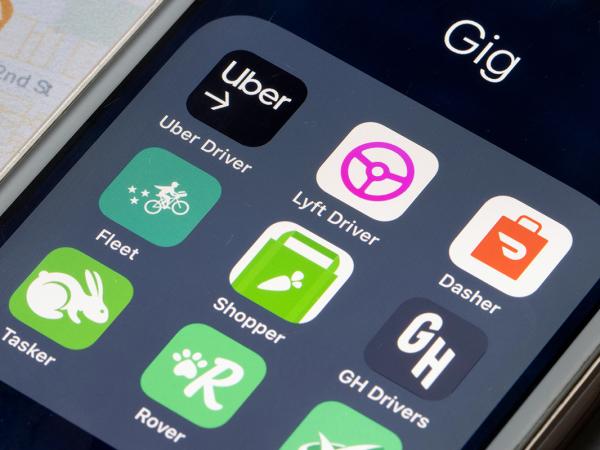Multiple jobs
There are tax, National Insurance, and benefit issues to be aware of when taking on an extra job. We aim to help you understand the impact that having more than one job can have on your finances.

Content on this page:
Overview
If you have more than one job, it is important to make sure you are paying the right amount of tax. Problems can arise because the PAYE system does not easily cater for multiple jobs.
You only have one tax free personal allowance per tax year and the number of jobs you have does not affect this. The PAYE system is designed to treat one job as your main employment and the other job(s) as secondary.
If you have two employments, HMRC will generally allocate your personal allowance to your main job – normally the job which pays you the most money. The other job will then have a different PAYE code allocated to it; in most cases this will either be a BR or a D0 code, assuming you do not live in Scotland. If it is BR then tax will be deducted at the basic rate of 20%. If it is D0, it means tax will be deducted at the higher rate of 40%.
If you live in Scotland and are a Scottish taxpayer, different income tax rates and bands apply to your earned income. There is more information in our pages on Scottish income tax.
If you live in Wales and are a Welsh taxpayer, different income tax rates and bands apply to your earned income. There is more information in our pages on Welsh income tax.
Paying too little tax
Because most people pay tax at 20% (you would have to have total income of over £50,270 in 2024/25 to pay tax at any more than 20%; unless you live in Scotland where the income tax rates and bands are different to the rest of the UK), the system outlined above helps ensure that you will not underpay tax.
But this system sometimes does not work perfectly. For example, if HMRC are not aware that you have multiple employments, then you may be given the tax-free personal allowance more than once. You will then not have paid enough tax. To prevent this happening, you should make sure HMRC know you have more than one job by always giving your new employer HMRC’s starter checklist (you will not be able to give them a P45 when taking on an extra job). Even when you have told HMRC about your circumstances, you should ensure you check your PAYE coding notices carefully.
Getting a tax refund
The way the PAYE system works if you have more than one job means that you might overpay tax if the earnings from your main job add up to less than the personal allowance. In this situation you will have paid tax at 20% on too much of your other income.
If this happens to you, you will probably have to wait until the end of the tax year and ask HMRC for a refund, or wait for HMRC to carry out their tax year-end reconciliation process – in which case you should be sent a P800 tax calculation and a repayment in July/August after the end of the tax year.
Splitting your personal allowance
Under the system outlined above, you could end up paying too much tax if the income from all your jobs adds up to less than your personal allowance.
In this situation you can ask HMRC to divide your personal allowance between two jobs. Only do this if your income from each job is predictable and stable. You also need to review the position regularly to ensure that the split continues to be appropriate.
You can find HMRC’s contact details on GOV.UK.
If HMRC cannot do this, or your income will exceed your personal allowance, at least make sure that your personal allowance is set against the source of income that will pay most in the tax year. That will minimise the tax you pay as you go along.
National Insurance
If you have more than one employment, you might have to pay some National Insurance contributions (NIC) on income from each of your jobs.
However National Insurance operates in a different way from income tax. With tax there is a single tax-free amount available per person per tax year – the personal allowance. For National Insurance there is a separate limit for each job. The exception to this is if your employers are connected to each other, for example you work at a supermarket and a petrol station but they are both owned by the same company. In this case you would be treated as having one employer when calculating your NIC.
For the rates and limits see our page covering Tax and NIC rates and bands. For more information about how NIC works for employees see our page on NIC for employees.
Tax credits
Taking another job may help you qualify for working tax credit as by adding the hours together from all your jobs you might meet the hours requirement for your age and circumstances. If the extra job means you work at least 30 hours a week, you may get an extra amount added to your tax credit award.
However, if you already qualify for working tax credit, then increasing the number of hours you work (and income) may mean a reduction to your tax credit award overall because the extra income you receive from working more hours may affect the amount of tax credits you can get.
You can find more about tax credits in our Benefits section.
Universal credit
Tax credits are being replaced by universal credit and you may now have to claim universal credit. Unlike working tax credit, for universal credit, you do not need to work a minimum number of hours to qualify but there may be a minimum amount that you are expected to earn. This will be agreed between you and your work coach, as part of your claimant commitment.
How much universal credit you get in an assessment period will be based on the total amount of earnings you receive in that assessment period. The Department for Work and Pensions (DWP) (who administer universal credit) will normally get information about your earnings across all your jobs from your employers through HMRC’s real time information (RTI) system.
If you have multiple jobs and also claim universal credit, we suggest you seek a benefits review from Citizens Advice or use one of benefits calculators referred to on GOV.UK. This would be sensible in any case, as your increased hours (and income levels) may have other consequences that you should be aware of, for example, it may affect any other means-tested benefits you claim.
You can find out more about universal credit in our Benefits section and on our sister website RevenueBenefits.
Auto-enrolment: workplace pensions
Employers must automatically enrol all staff who meet certain criteria in a workplace pension scheme. If you have more than one job, then each of your employers will have to check whether you are eligible for that employment separately.
This may mean that no employer needs to enrol you in a workplace pension scheme.
On the other hand, you may be eligible in one but not the other, or both.
If you are eligible in both, then you should be automatically enrolled in both workplace pension schemes (although you can decide to opt out). The contribution amounts involved are likely to be smaller than if you earned all your income from one job, because the first £6,240 of earnings in each employment are not included in the calculations.
You may be able to opt-in to a workplace pension even if you are not auto-enrolled.
There is more information about automatic enrolment on our page pensions: auto-enrolment into workplace pensions.
Student loan repayments
Once your income goes above the student loan repayment threshold for your particular loan(s), your employer will deduct a percentage of your income that is above the threshold and pay it to HMRC.
Each separate employer you have will give you a full repayment threshold.
If, however, you must complete a tax return for whatever reason, for example because you are self-employed, HMRC will calculate the loan repayments you owe for the whole year, by amalgamating all your earned income and charging the relevant percentage on all income above the threshold. This essentially means you will only get one full repayment threshold across all your income.
If you receive unearned income (such as rent or interest from savings) of over £2,000 a tax year, then all this unearned income will be used when calculating loan repayments at the relevant percentage whether or not your earned income is above the repayment threshold. HMRC will take account of the deductions already made by your employers during the year, but it is likely there will be more to pay.
If you do not need to complete a tax return, you will not have to make further repayments beyond those already taken by your employers. For more information see our page on student loan repayments.
Statutory sick pay (SSP)/statutory maternity pay (SMP)
If you have more than one job, you may qualify for SSP and SMP in each of them provided you earn above the lower earnings limit (LEL) for National Insurance contributions in each job and meet the other conditions.
You can find out more about the sick pay position in our guidance about SSP. You can find out more about SMP on GOV.UK.
Employed and self-employed
It is possible to be both employed and self-employed at the same time. For example, you might have a full-time or part-time employment and work in the gig economy to earn extra money in your ‘free time’.
You pay tax on your employment and self-employment income in different ways. The total tax you pay is based on your total combined income from all sources.
You pay tax on your employment income through PAYE.
You pay tax on your self-employment profits under the self assessment system. If you must complete a self assessment tax return because of your self-employment income, you must also include your employment income (and taxes paid) and any other income that you have on your self assessment tax return, not just the self-employment income as it is a ‘return’ of all of your taxable income for the year.
Personal allowance
If you work as an employee and are also self-employed, HMRC will allocate your whole personal allowance to your employment income. If your employment income exceeds the personal allowance, you will be liable to income tax on your total self-employment profits.
For example, if you are a basic rate taxpayer, you will be liable to pay basic rate tax on your total self-employment profits.
It is therefore sensible to put away some money during the tax year to pay your tax liability on your self-employment income in due course.
There is more information on our page on paying tax on self-employed profits and making payments on account.
Other considerations
Conflicts of interest
You should make sure that your employment contracts do not prevent you taking on more work – it could be seen as a conflict of interest, for example. Even if there is nothing in your contracts, it is generally good practice to be open with your employers about having more than one job.
Employment rights
You and your employer can agree to any terms you want, but you cannot agree to any terms that give you less than the rights you have under law.
Working hours
By law, most workers cannot be compelled to work more than an average of 48 hours per week. If you are over 18, you can opt out of this, and may need to do so if you want to take on more than one job.
You can find more information on GOV.UK.



